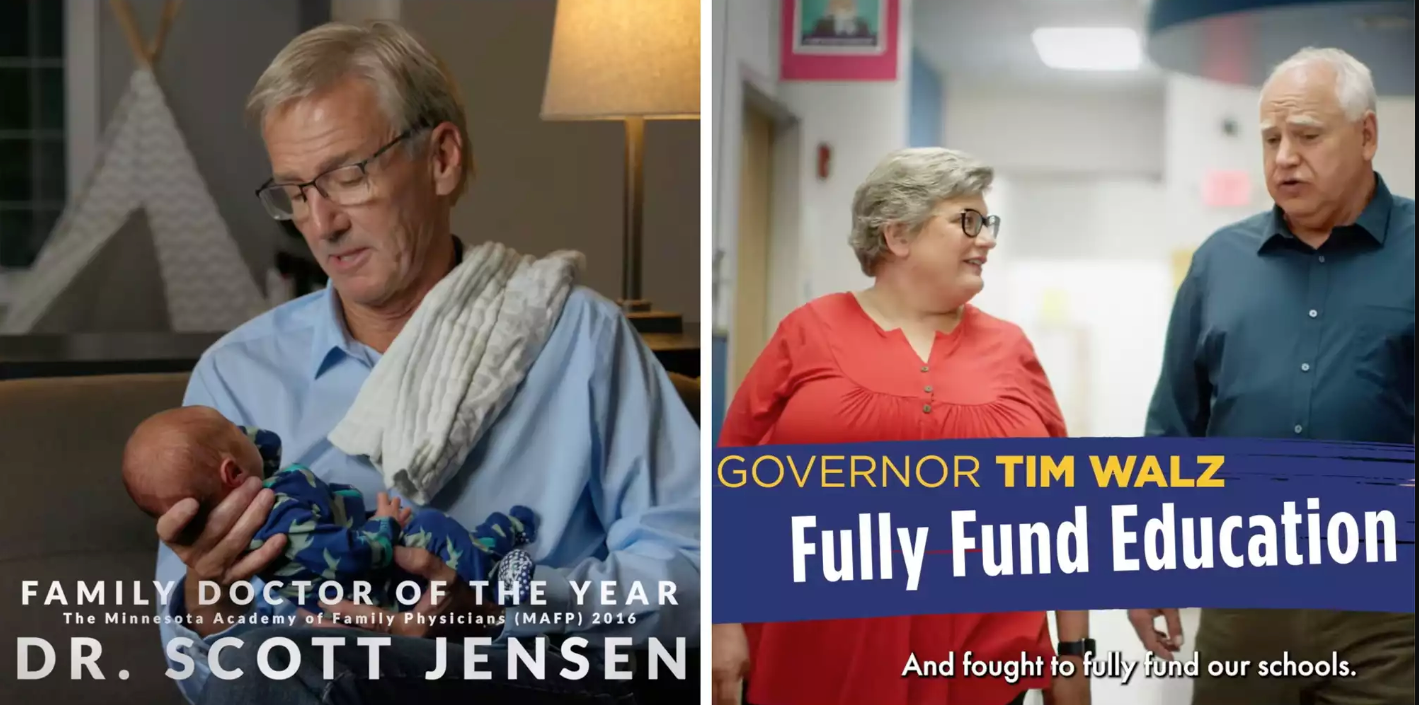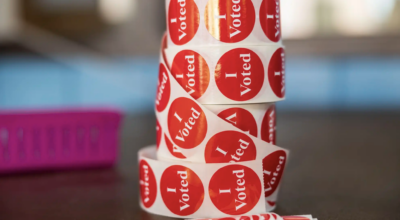Ads aplenty go up as ‘22 campaign intensifies
Published 2:13 pm Thursday, September 8, 2022

- Minnesota governor candidates Scott Jensen and Tim Walz have run multiple campaign ads on YouTube. Screenshots from the Scott Jensen and Tim Walz campaigns
|
Getting your Trinity Audio player ready...
|
By Brian Bakst, Minnesota Public Radio News
Ready to be inundated with political ads? Now that Labor Day is past, the commercials from candidates, parties and outside groups are ramping up.
Even if you don’t watch TV, the campaigns are looking for every avenue to get your attention with Election Day now just two months away. From screens to the skies and many places in between, candidates are hoping their points sink in.
“Voters aren’t paying attention necessarily during the summer,” said Erika Franklin Fowler, professor of government at Wesleyan University in Connecticut, who tracks political ads and trends across the country. “And so it’s essentially when people are back to their normal routines in the fall, that’s really when candidates and campaigns are trying to make their final pitches as we head into November.”
Campaign ads offer a prime window into what candidates and their allies view as the issues resonating most. Messages often mirror polling or what’s driving the news.
Some big issues this year are education, inflation and abortion after the Supreme Court overturned Roe v. Wade’s constitutional protections. Images of the upheaval after George Floyd’s killing by police will also get ample use.
Ads from DFL Gov. Tim Walz highlight his efforts to boost school funding, which he contrasts with Republican candidate Scott Jensen’s comments questioning where education dollars go. Walz has also run commercials touting the state’s strong economy and the rebound from COVID-19.
“We’ve been through a lot but we’re coming back strong. Now I’m fighting for more relief for families so we can keep moving forward as one Minnesota,” Walz says in an into-the-camera appeal that closes out his opening ad, complete with upbeat music and sunrise images.
Ads from the Alliance for a Better Minnesota are more searing. The pro-Walz group has run loads of commercials highlighting past Jensen comments favoring abortion restrictions.
On Wednesday, Jensen aired his first TV ad. It features him holding his newborn grandchild and discussing abortion.
“Abortion is divisive, and Tim Walz is weaponizing the issue,” Jensen says as the infant wiggles in his hands. “In Minnesota, it’s a protected constitutional right, and no governor can change that. And I’m not running to do that.”
He closes by saying he wants to bring the focus back to public safety, education and inflation. But that he is talking about abortion in his opening ad demonstrates that the issue is exacting a political toll on his campaign.
Jensen has gone from saying he’d support a full ban on abortion to laying out exceptions in cases of assault or when a mother’s life is at risk. Minnesota’s abortion-access protections are rooted in a state Supreme Court decision.
To be sure, governors appoint justices when there are vacancies, but it would take a new legal challenge or constitutional amendment to completely reverse course. But lawmakers could seek to add new restrictions or licensure expectations for abortion providers.
The political ad push will be difficult for viewers to escape if they’re watching standard television programs.
Campaigns and outside groups are gobbling up time on everything from house remodeling shows on cable to prime-time network dramas to live sports. Political ads are routinely wedged around local newscasts because campaigns know they’re getting in front of a civically engaged audience.
Generally speaking, the more watched a program is, the more campaigns want to piggyback. But that’s also pricey.
One 30-second ad this weekend during the Minnesota Vikings game against the rival Green Bay Packers will set candidates back $35,000. It costs groups even more because candidates get a preferred rate.
But there are cheaper options. Walz is paying $24 for spots he’s airing on Hallmark Channel during “Golden Girls” reruns in the Mankato cable market.
It’s all about when the ads run, how popular the show is and what the demographics are of the likely audience. But campaigns also want to be sure people are seeing their ads enough times to sink in — what the industry calls frequency or impressions.
Walz has been on air since July and is now running hundreds of thousands of dollars in ads a week, with that increasing as the election grows closer. His allies are adding on.
Jensen’s initial TV buy is smaller, but his campaign says he’ll have a robust presence on air. He’s likely to considerably lag Walz in overall ad spending.
An independent candidate, Hugh McTavish, has also been airing television ads.
Based on ad time reservations, there also will be ads in the attorney general race, likely the secretary of state race and cable spots in key legislative districts.
The main event among the U.S. House races is in the 2nd District, which is south and east of the Twin Cities.
DFL Rep. Angie Craig and Republican challenger Tyler Kistner have millions of dollars in commercial time lined up, and several outside groups are ready to throw in millions more.
And it won’t be only TV where the ads land.
Captive audiences are key.
Digital ads and banners follow you around the internet or social media based on browsing habits. Publicly available data on spending on digital text and video show Walz and his key allies far outpacing Jensen and his backers in that area, too.
There was that ubiquitous “Walz Failed” plane banner hovering above the State Fair as well as hand-held fans and backpacks. A digital ad with the anti-Walz slogan flashes on screens above suburban restaurant urinals.
Franklin Fowler, who directs the Wesleyan Media Project, said campaigns are adapting to changing entertainment and media consumption habits.
“From a paid advertising perspective, television still garners the bulk of the campaign spending, in part because it’s expensive. But it’s certainly the case that fewer people are watching TV because of lots of cord cutting and other things,” she said. “And so as audiences gravitate to different spaces and get rid of their cable TV altogether, that means campaigns and those who are trying to reach voters do have to use more tools in order to reach folks.”
— APM Research Lab senior research analyst Ben Cleary contributed to this report.





